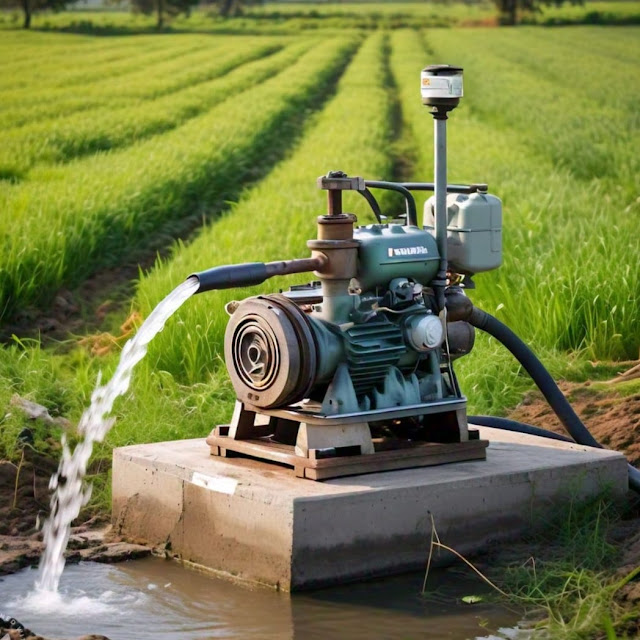Agriculture is the backbone of the Indian economy, employing a significant portion of the population and contributing to the country's GDP. Over the years, the Indian agricultural sector has witnessed significant advancements, particularly with the introduction of various types of machinery that have revolutionized farming practices. These machines have not only increased productivity but also reduced the labor intensity associated with traditional farming methods. Here, we will delve into the top five most used agricultural machinery in India, exploring their functionalities, benefits, and the impact they have on the agricultural landscape.
1. Tractors
Tractors are undoubtedly the most essential machinery in Indian agriculture. They are versatile machines used for a variety of tasks including plowing, tilling, planting, and transporting goods. The importance of tractors in Indian farming can be attributed to their ability to perform multiple functions, thus saving time and labor.
Functions and Benefits:
1. Plowing and Tilling: Tractors are primarily used to prepare the soil for planting by breaking up and turning over the soil. This process helps in aerating the soil, improving water infiltration, and promoting the growth of crops.
2. Planting and Fertilizing: Modern tractors are equipped with attachments that can plant seeds and apply fertilizers uniformly, ensuring better crop yields.
3. Transportation: Tractors are also used to transport goods, including harvested crops, seeds, and fertilizers, from one place to another, making them highly valuable for farmers.
Impact on Agriculture:
The introduction of tractors has significantly increased agricultural productivity in India. They have enabled farmers to cultivate larger areas of land in a shorter time, leading to increased crop production and improved economic conditions for farmers.
2. Combine Harvesters
Combine harvesters are another crucial piece of machinery in Indian agriculture. These machines combine three harvesting operations - reaping, threshing, and winnowing - into a single process, hence the name combine harvester.
Functions and Benefits:
1. Reaping: The combine harvester cuts the crop and gathers it.
2. Threshing: It then separates the grains from the stalks.
3. Winnowing: Finally, it cleans the grains by removing chaff and other impurities.
Impact on Agriculture:
Combine harvesters have revolutionized the harvesting process in India by significantly reducing the time and labor required. They ensure that the crops are harvested at the right time, thus reducing post-harvest losses and increasing the overall efficiency of the farming process.
3. Seed Drills
Seed drills are essential for precise planting of seeds at proper depth and spacing. This machinery ensures that seeds are sown uniformly, which is crucial for optimal crop growth and yield.
Functions and Benefits:
1. Precision Planting: Seed drills plant seeds at uniform depths and spacing, ensuring that each seed has the optimal conditions for germination and growth.
2. Efficient Use of Seeds: By planting seeds uniformly, seed drills reduce the wastage of seeds, making the planting process more cost-effective.
3. Improved Crop Yields: The uniformity in planting helps in better crop management and results in higher yields.
Impact on Agriculture:
The use of seed drills has improved the efficiency and productivity of Indian agriculture. Farmers can now achieve higher germination rates and healthier crops, leading to better overall yields and profitability.
4. Irrigation Pumps
Irrigation is critical for agricultural productivity, especially in a country like India where many regions experience erratic rainfall. Irrigation pumps are used to draw water from various sources such as rivers, lakes, wells, and reservoirs to irrigate agricultural fields.
Functions and Benefits:
1. Consistent Water Supply: Irrigation pumps provide a reliable source of water for crops, ensuring that they receive the necessary moisture for growth.
2. Improved Crop Quality: Consistent and controlled irrigation helps in maintaining the health of crops, leading to higher quality produce.
3. Water Efficiency: Modern irrigation pumps are designed to use water efficiently, minimizing wastage and promoting sustainable farming practices.
Impact on Agriculture:
Irrigation pumps have transformed Indian agriculture by enabling farmers to cultivate crops even in arid and semi-arid regions. They have reduced the dependency on monsoon rains and have made year-round farming possible, thereby increasing agricultural productivity and stability.
5. Rotavators
Rotavators, also known as rotary tillers, are used for secondary tillage operations. They are attached to tractors and are used to break up, churn, and mix soil to prepare it for planting. Rotavators are highly effective in managing crop residues and improving soil health.
Functions and Benefits:
1. Soil Preparation: Rotavators break up compacted soil, making it more porous and aerated, which is essential for healthy root growth.
2. Weed Control: By churning the soil, rotavators help in uprooting weeds, reducing the need for chemical herbicides.
3. Crop Residue Management: They effectively chop and incorporate crop residues into the soil, enhancing its organic matter content and fertility.
Impact on Agriculture:
Rotavators have greatly contributed to sustainable farming practices in India. By improving soil structure and health, they help in increasing crop yields and promoting environmentally friendly agriculture. They also save time and labor, making farming more efficient and productive.
Conclusion
The introduction and widespread use of agricultural machinery in India have brought about a significant transformation in the farming sector. Tractors, combine harvesters, seed drills, irrigation pumps, and rotavators have collectively enhanced productivity, efficiency, and sustainability in agriculture. These machines have not only reduced the labor intensity associated with traditional farming methods but have also empowered farmers to achieve higher yields and better economic returns.
Agricultural machinery has become indispensable in modern farming, and its continued adoption will play a crucial role in addressing the challenges of feeding a growing population and ensuring food security. As technology continues to evolve, it is essential for farmers to stay informed and adopt the latest advancements to maximize their productivity and sustainability.
Summary: The top five most used agricultural machinery in India - tractors, combine harvesters, seed drills, irrigation pumps, and rotavators - have revolutionized farming practices and contributed to the overall growth and development of the agricultural sector. Their impact on productivity, efficiency, and sustainability underscores their importance in the future of Indian agriculture.







0 Comments